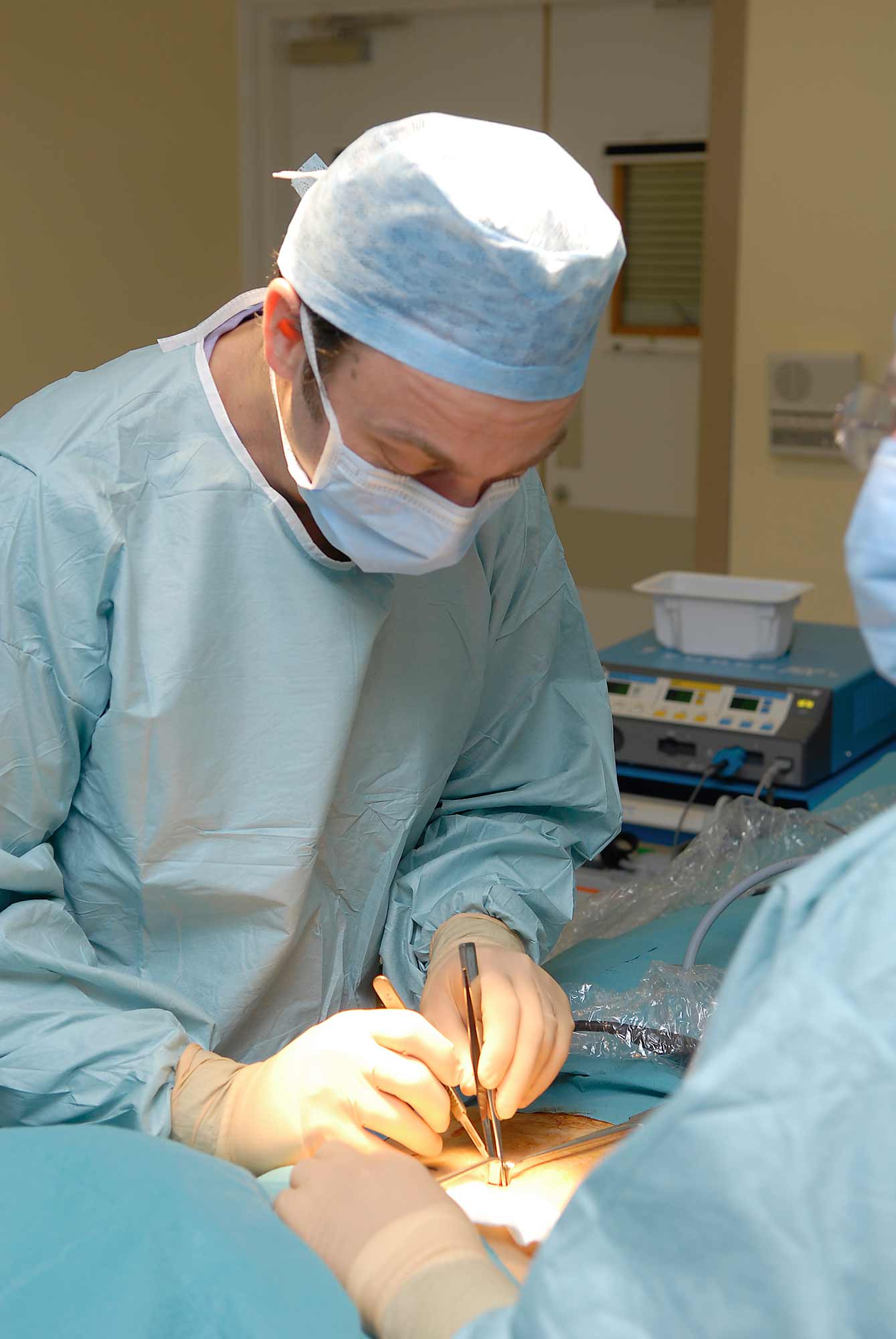
Hicks-Three-Shires_023
Open / Tension Free Repair
Open mesh repair – ‘Lichtenstein type repair’
The mesh repair is the technique most commonly used to repair inguinal hernias. An incision is made in the groin, to expose the weakness in the abdominal wall. If there is a sac associated with the hernia, it is called an indirect hernia. In this case, the sac is excised. Where there is no sac, the hernia is a direct hernia. In this case, the weakened layers of the posterior inguinal canal are repaired. In either case, for both direct and indirect hernias, a synthetic mesh is placed between the layers of the oblique muscles. The mesh is secured in place with sutures. The purpose of the mesh is to cover the area of weakness and produce a strong repair.
What does the operation involve?
The operation is usually performed under local anaesthetic with you awake. The groin area is temporarily numbed. Occasionally general anaesthetic is advised for especially large hernias. The operation takes approximately 30 minutes. You can usually go home on the same day as the operation. The repair is uncomfortable for 5-10 days after surgery. During this time you should rest and avoid lifting.
As the discomfort improves you can gradually increase your daily exercise, in particular walking, to strengthen the abdominal muscles.
What complications can occur?
- Pain
- Bleeding
- Wound infection
- Mesh infection
- Scar
- Difficulty passing urine
- Numbness around the scar
- Atrophy of the testicle (Shrinkage)
- Hernia recurrence
